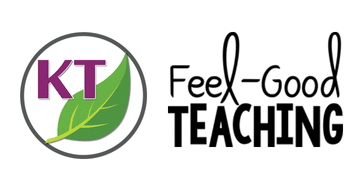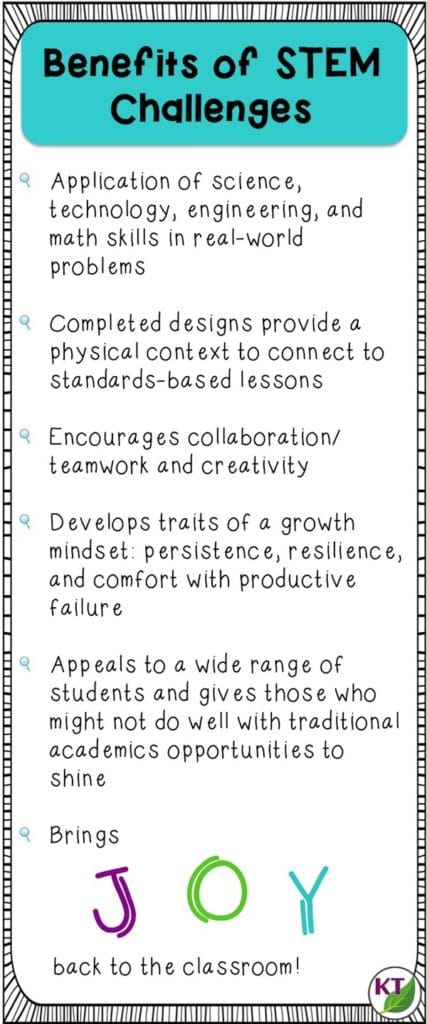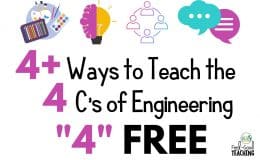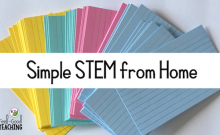Let’s answer the basic questions –Who, What, When, Where, Why, and How — of STEM Challenges!
The video above was one of the first I made a couple of years ago. I’d like to think I’ve improved my video craft quite a bit since then, but since the content is good and sometimes it’s nice to watch rather than read, I’m including it here. I’ve also included the main ideas along with some new points in the text below!
What?
STEM challenges are activities where students design and build solutions to problems using a combination of science, technology, engineering and math skills.
You may also have seen the acronyms STEAM (A = art) and STREAM (R = robotics). You can involve myriad subject areas; the more, the merrier, in my opinion! Many of my challenges, for example, incorporate ELA and art, and some bring in PE and social studies too. There’s no need to limit the connections you and your students can make.
Who?
STEM Challenges are for everyone, young and old! Consider tower building. Toddlers through adults have been know to engage in this task. Clearly, they use different materials and have different parameters for success, but this example serves to show challenges can be made right for any age. It’s up to the teacher to tailor criteria & constraints to make the challenge age-appropriate (more on this to come).
Another hidden gem about STEM Challenges –> often students who struggle with pencil/paper academic tasks excel with STEM Challenges and vice versa! STEM Challenges level the playing field for your students! I’ve seen my over-achievers develop humility, empathy, and a deeper respect for their peers, and I’ve seen my students who sometimes struggle with traditional academics shine and develop self-confidence and pride in their abilities.
When & Where?
Weekly, if possible! Start with once a month, build up to twice a month, and get to weekly challenges as soon as you can. The main thing is to make it work for you so that you’ll continue to implement. Typically, challenges will take 45 – 60 minutes for the planning, building, and analyzing results/discussion. You’ll want to include extensions to pull in multiple subject areas as well. R
Typically STEM Challenges are done in your math or science block, but they make sense in any subject area where a problem needs to be solved, including ELA and social studies!
Related videos:
Making STEM Challenges Work with Short Class Periods, part 1
Making STEM Challenges Work with Short Class Periods, part 2
5 Reasons to Do STEM Challenges Every Friday
Why?
It’s as close to a magic bullet as I’ve ever seen in my classrooms. Students are engaged in rigorous, higher-level critical thinking and problem-solving skills when they do STEM Challenges. It’s a natural way to incorporate NGSS, math, and other content standards meaningfully using a hands-on approach. As if all that weren’t enough, students also develop the soft skills that college professors and employers say are essential to their future success: collaboration & teamwork, growth mindset, resilience, and perseverance in face of frustration and failure. I can’t think of a single type of activity other than STEM Challenges that provide so much and do it while producing so much joy in the classroom to boot!
How?
“How” is a BIG question — too big to answer in just one blog post! This site is devoted to making the “how” easier for you! You’ll find PD, video FAQ, and resources linked throughout. You should also be sure to subscribe to the newsletter for updates on live trainings, resources, and more.
But where should you go from here? Head over to the STEM Challenges Basics page for the core videos to get you started with STEM Challenges!
PIN ME!












